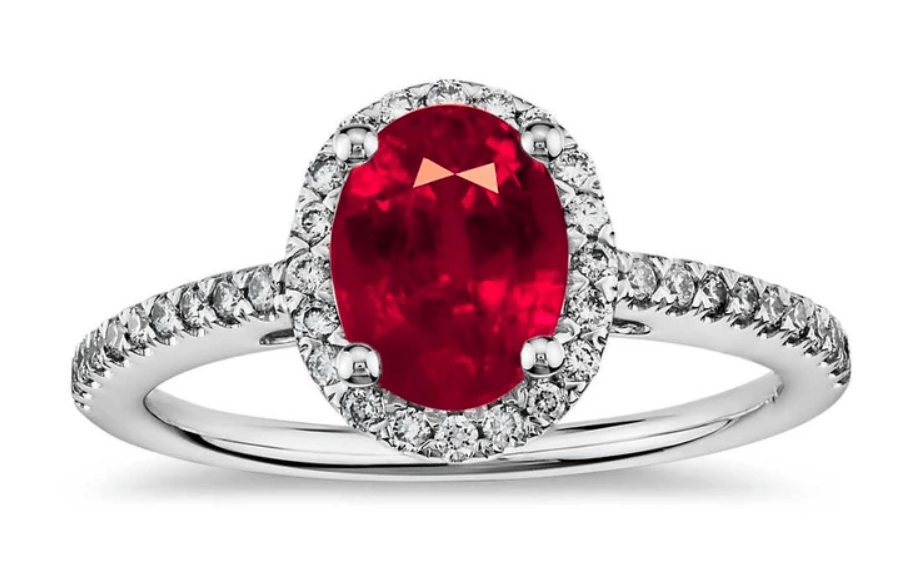July Birthstone: Ruby
Ruby, the great birthstone of July, is the most valuable member of the corundum species, with sapphire coming second. What makes ruby so highly valued perhaps is its intense red colour that has fascinated countless eras. A famous Roman scholar even quoted the colour of ruby as “burning coal” for its likeness. Soon, many past civilisations have adopted beliefs for this precious gemstone.
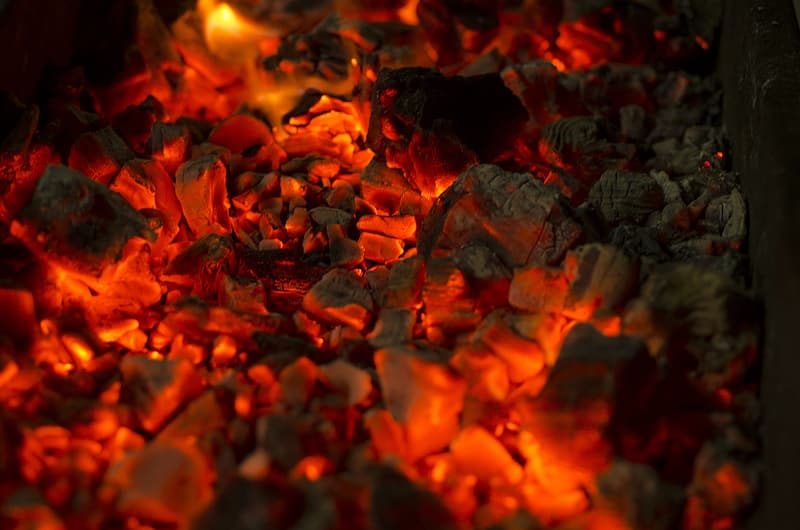
The ruby’s fiery red hue has long been associated with the blood that flows through the human veins, suggesting that ruby held the power of life. Ancient Burmese and Chinese wore rubies to battles as a symbol of protection and safety. Rightly so, because corundum is among the hardest minerals on Earth, even then no one knew how hard it was. Throughout history, Ruby was so highly regarded that the ancient Hindus labeled it as “the king of precious stones” in Sanskrit. Until now, it is one of the most sought-after gemstones in the world, ranking among the other precious gemstones such as diamonds, sapphires, and emeralds.
While many past and present cultures have adorned the colour red, ruby has always been confused among other red gemstones, especially spinel. Not until the 1800s that people worldwide acquired the knowledge to distinguish ruby from spinel. One famous example of mistaken identity is the Black Prince Ruby. This “ruby” belonged to the British Royal Family since the mid-1300s. The royal family wore it as a pendant and re-designed into other forms of jewellery before being set in the Imperial State Crown of the Crown Jewels of the United Kingdom as seen today.
Differentiating one red “ruby” from another
Now with sufficient gemological knowledge, it is fairly simple to set one apart from another. Ruby, along with sapphire, is part of the corundum family which has a chemical composition of aluminum oxide. However, the purest form of corundum does not come in any colours at all, it is colourless. Rubies get that intense red colour from trace elements of chromium. The strength of its redness depends on how much chromium is present: more chromium, the stronger the red, and vice versa.
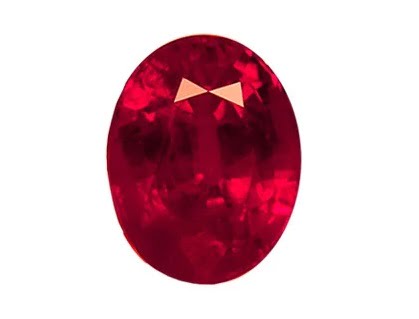
Another factor for ruby’s alluring redness is its capability to fluoresce red, proving the amazing wonder of nature. By fluorescing red on top of its original body colour under UV lights, it allows the stone to, as if, glows from within. For them to exhibit such an unusual spectacle, the growth environment must be low or absent of iron that inhibits fluorescence. The absence of iron in marble-hosted rubies is typically capable of fluorescing, unlike basalt-hosted rubies. Burmese rubies, for example, are marble-hosted with good reaction to UV lights, much to the delight of ruby enthusiasts.
The downside is that not every source produces fluorescing rubies. This feature is notably famous in Burmese rubies that match perfectly with its intense glow of redness. The presence of fluorescence actually intensifies its actual body colour. That makes Burmese rubies so valuable and highly sought after. Regardless, what determines the value sits significantly on the concentration of its colour. To make things complicated for traders and gemologists, rubies can come in many shades of red, from orangy-red to purplish red. These descriptions of red are not the most complicated ones. The most complicated description is the very precious, the finest and purest hue of ruby dubbed as ‘pigeon’s blood’.
Value of a ruby today…
In the world of coloured stone, there are no fixed standards on their prices. In the gem trade, the term “willing buyer, willing seller” has always been used to describe the price fluctuation. Nevertheless, Burmese rubies have demonstrated the definition of that term. A ruby ring known as The Sunrise Ruby from this famous origin with its highest hue grade has fetched for USD 30.3 million at an auction, creating a new world record price for a colored gemstone.
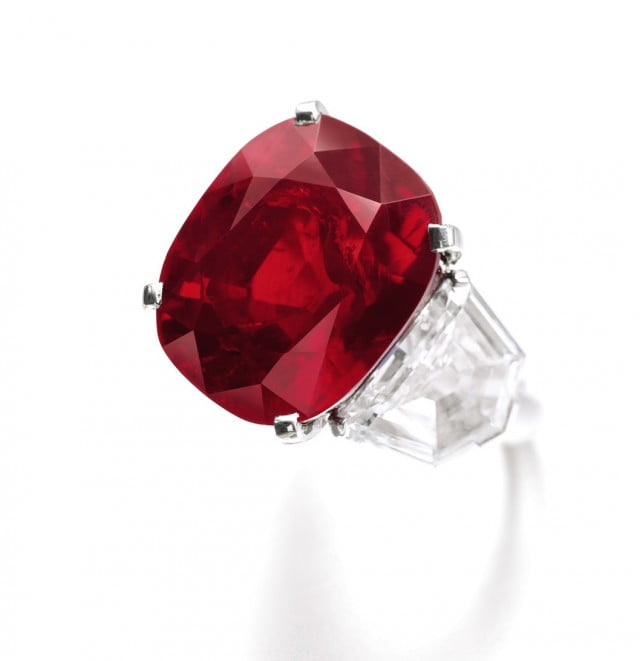
Fine rubies are tremendously rare, not to mention large fine ones. Multiple components have to combine to create this gemstone wonder. Apart from the presence and amount of a somewhat rare element of chromium, rubies often contain inclusions. To its benefit, rubies from certain locations host light-scattering, extremely tiny, and oriented rutile needle inclusions. Known as silk, it helps mask extinction or leakage of light as a result of poorly cut proportions by slightly distributing light across the stone.
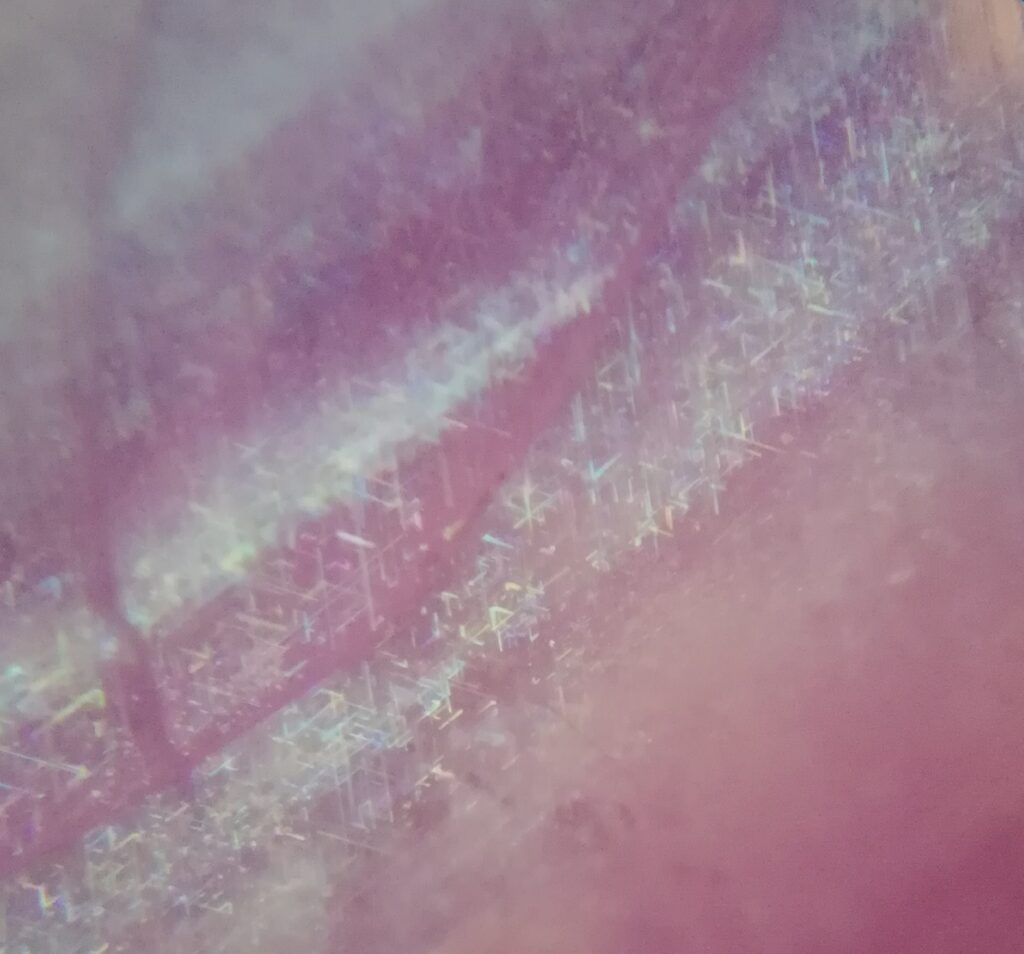
Rubies never cease to enchant the hearts and souls of jewellery and gemstone enthusiasts. The red that consumes one’s mind will always be the talking point of a ruby. As Burmese people hold ruby dearly to their hearts, we all should uphold the magnificence of this gem up high among the greatest.
Remember to subscribe to our monthly e-newsletter. For latest updates on The Gem Museum, follow us on Facebook or Instagram.

